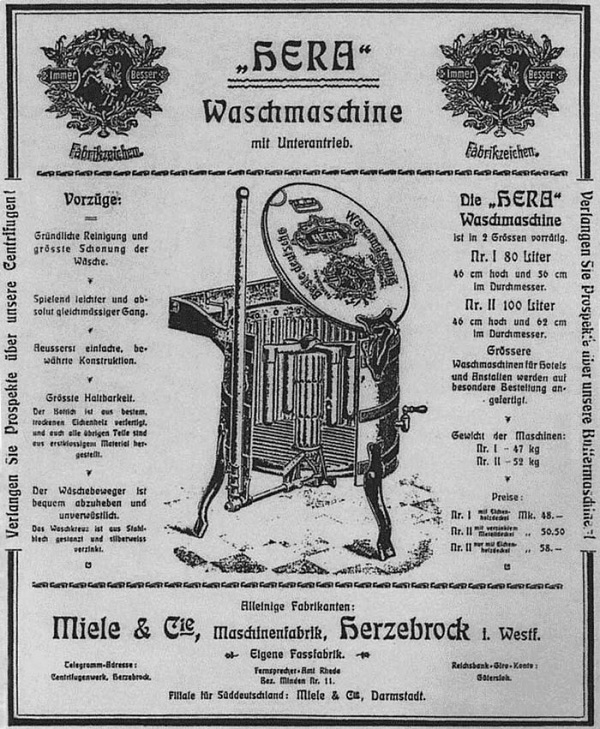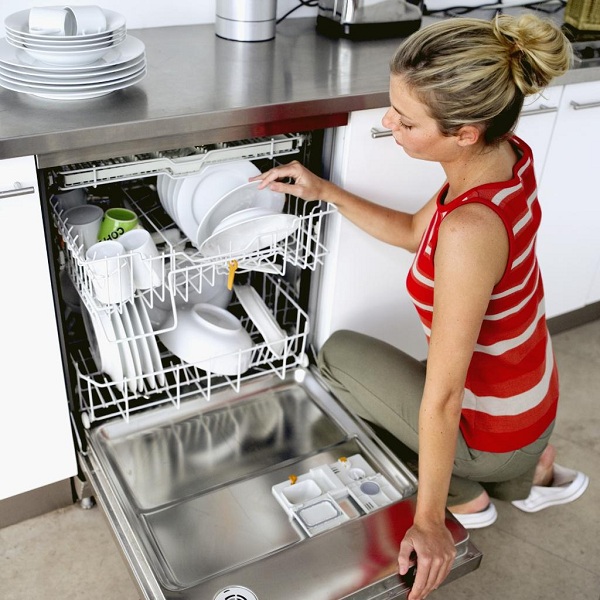How does a dishwasher work?
This assistant was created in order to really ease the hard work of washing dishes. It’s better to spend your time on more important things. Of course, those who want to buy such equipment are interested in an important question: how a dishwasher works.
Content
The first device and its principle of operation
Most first sample the dishwasher from 1880 had to be driven manually with a handle. Already in further versions the motor was attached, but the equipment helped to wash the dishes with a terrible crash (and could break the cup). Inventor Josephine Cochrane patented it in 1893, giving rise to the first industrial developments.
Model for serial release was introduced by the German brand MIELE (Mil). The upgraded technology had a very nice look,was something like a cylinder and rolled on the kitchen on three wheels.

The principle of the dishwasher - a mixture of cleanliness and environmental friendliness. In this case, the device works almost inaudibly (the noise level varies from 43 to 65 dB) and consumes few resources - a maximum of 2.8 kW / hour. There is one more plus that all manufacturers try to adhere to - safety natural resources. That is why the samples from the last lines consume less water and electrical indicators: about fourteen sets of dishes can be washed in only eleven liters of water.
Such indicators can not be compared with consumed resources manually.
But still, how does the dishwasher work from the inside in practice? What's happening?
The stages of the dishwasher
The algorithm of functioning of the device, of course, is registered in any instruction. However, often all indicated incomprehensible technical language. Everything can be described much easier (using the bosch dishwasher as an example):
- To begin with, dirty dishes fit into the device. In this case, knives, forks and spoons are stacked in horizontal position (in some models there is a special pallet for this).

- Then, using the “Start” button, the program selected by the user is launched - this is how the washing mode begins. This process consists in supplying water through water intake valve. The flow of fluid goes to a strictly defined capacity.
- How does the dishwasher go on? Salt and water are mixed. The last ingredient is required for water softener to provide excellent results.
- At the same time, water heating is activated. As soon as it reaches the desired degree, the remaining processes are connected.
- For too dirty dishes, you must first activate soak mode. In this case, water and detergent will be supplied in small dosages. On the dirty dishes they come by spraying.
- After the washable inventory logically served primary rinsing. In this case, food residues will be washed away under pressure using sprinkler. This item is located under the bottom of the basket. When working, it also rotates, which only increases the range.
- Thought out and the system re-rinse - for this purpose, the water collected in the tank is used the first time. This saves money and water.
- The waste water will merge when the system commands it. In this case, all the liquid will be pumped out using drain pump. The device will take a little more water from the plumbing system for rinsing, this time draining it into the sewer system.
- The result will need to be rinsed with clean water - this will remove residual dirt and detergent. Fluid is pressurized with circulation pump in the detail sprinkler. The number of repetitions of this operation depends on the specified program.
- Waste water with special pumps go down the drain.
- A modern device not only washes, but also dries dishes. There can be two options: the natural convection mode (the dishes dry out gradually) or the forced injection of hot air through the fans.
The described process is clear and simple, but you always want to see everything with your own eyes. For such curious users, there is a video that shows how the dishwasher works:
Physical processes in the service of cleanliness
The painted algorithm shows us that the principle of operation of such a modern device is based on the use of the same portion of water, which is purified through a well-thought out filter system. Involved here heat exchanger, which is represented by a flat reservoir - it is in it that already heated water and a new portion are found. It also helps with condensation drying, heating up the dishes with residual heat.

Principle of operation of the device
Is such a technique really so economical? How much energy will be spent on 12-14 sets of dishes? For a device with class A, this figure will be 0.74-1.05 kWh.
There is also savings in water - this is especially obvious in models where dishes can be washed while incomplete download. The technique already provides devices that measure the minimum amount of water and energy (as well as detergents) in accordance with a specific portion of dishes - all these indicators will be taken based on how much they are needed.
And how much time does a dishwasher do for such work? Approximately 40-60 minutes. Of course, any hostess can argue that she washes much faster. But is it more profitable in terms of resource costs? Unlikely. The modern dishwasher copes with its responsibilities much better. That is why it makes sense to put such equipment on every domestic kitchen.

/rating_off.png)











